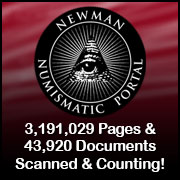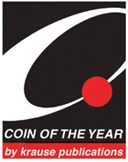
About UsThe Numismatic Bibliomania Society is a non-profit association devoted to the study and enjoyment of numismatic literature. For more information please see our web site at coinbooks.org SubscriptionsThose wishing to become new E-Sylum subscribers (or wishing to Unsubscribe) can go to the following web page link MembershipThere is a membership application available on the web site Membership Application To join, print the application and return it with your check to the address printed on the application. Print/Digital membership is $40 to addresses in the U.S., and $60 elsewhere. A digital-only membership is available for $25. For those without web access, write to: Charles Heck, Treasurer AsylumFor Asylum mailing address changes and other membership questions, contact Chuck at this email address: treasurer@coinbooks.org SubmissionsTo submit items for publication in The E-Sylum, write to the Editor at this address: whomren@gmail.com
BUY THE BOOK BEFORE THE COIN |
- WAYNE'S WORDS: THE E-SYLUM DECEMBER 13, 2020
- NEW BOOK: LARGE CENT 1793-1814 VARIETY GUIDE
- NEW BOOK: EXPLORING CURRENCY PLATE PROOFS
- BANKNOTE BOOK WEIHAIWEI CHAPTER PUBLISHED
- JEAN BELAUBRE (1931-2020)
- RICHARD L. HORST (1934-2020)
- NNP ADDS KOENINGS' REEDED EDGE HALF NEWSLETTER
- VIDEO: NATIONAL SILVER DOLLAR ROUNDTABLE
- VIDEOS: 2020 COLONIAL COIN EDUCATIONAL PROGRAMS
- AUDIO: COIN WORLD PODCAST WITH ROGER BURDETTE
- MORE COINS IN LUCITE: CHURCHILL, GOULD, KENNEDY
- NOTES FROM E-SYLUM READERS: DECEMBER 13, 2020
- QUERY: SECOND PHILADELPHIA MINT IMAGE ORIGIN
- QUERY: THE FIRST COINS OF ISRAEL
- VOCABULARY TERM: OPENWORK
- WILLIAM SPOHN BAKER (1824-1897)
- 2021 COIN OF THE YEAR NOMINATIONS
- THE NEW YORK SALE AUCTION LIII
- CLASSICAL NUMISMATIC GROUP TRITON XXIV SALE
- CANAAN BRONZE AGE SILVER DEBASEMENT
- THE COINAGE OF RHEGIUM
- READING ROMAN COINS
- BACKYARD TUDOR GOLD COIN HOARD FIND
- THE COINING HOUSE OF SEGOVIA
- LOUIS ELIASBERG'S BARBER HALF DOLLARS, PART II
- ADVENT COINS: ON THE ROAD TO BETHLEHEM
- PAPER MONEY DEPICTING JESUS
- BANK OF ENGLAND FATHER CHRISTMAS £5 POSTCARD
- MOVIE REVIEW: THE MILLION POUND NOTE
- U.S. POST-WWII GERMANY BARTER UNIT CERTIFICATES
- BEP CHOOSES ARCHITECTS FOR NEW FACILITY
- FORREST FENN FORTUNE FINDER FOUND
- UZBEKISTAN'S MINI GOLD BARS
- CASH, COINS AND COVID SEMINAR
- LOOSE CHANGE: DECEMBER 13, 2020
- BIG COIN: THE GIANT TOONIE
- BIG COIN: THE BIATEC MONUMENT
- FEATURED WEB SITE: WAR WORK TOKENS
Content presented in The E-Sylum is not necessarily researched or independently fact-checked, and views expressed do not necessarily represent those of the Numismatic Bibliomania Society.
WAYNE'S WORDS: THE E-SYLUM DECEMBER 13, 2020
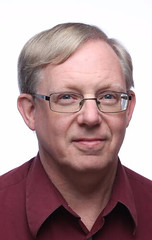 New subscribers this week include:
Darrell Luedtke courtesy John and Nancy Wilson; and
Chris Steenerson.
Welcome aboard! We now have 6,608 subscribers.
New subscribers this week include:
Darrell Luedtke courtesy John and Nancy Wilson; and
Chris Steenerson.
Welcome aboard! We now have 6,608 subscribers.
Thank you for reading The E-Sylum. If you enjoy it, please send me the email addresses of friends you think may enjoy it as well and I'll send them a subscription. Contact me at whomren@gmail.com anytime regarding your subscription, or questions, comments or suggestions about our content.
This week we open with three new books, two obituaries, updates from the Newman Numismatic Portal, and more.
Other topics this week include U.S. colonial coins, reeded edge half dollars, Gould patterns, the second Philadelphia Mint, the first coins of Israel, William S. Baker, Coin of the Year nominations, upcoming auction sales, the Royal Mint of Segovia, paper money depicting Jesus, the finder of Forrest Fenn's treasure, and two really, really big coins.
To learn more about U.S. Large Cent varieties, currency proofs, the National Silver Dollar Roundtable, Virginia Halfpence, openwork, the Half Noble of King Edward III, the Charles I gold Triple Unite, the coinage of Rhegium, Canaan silver, Tudor gold, the oldest psychiatric hospital in the world, the million pound note, the Giant Toonie, and Pistareen Mountain, read on. Have a great week, everyone!
Wayne Homren
Editor, The E-Sylum
NEW BOOK: LARGE CENT 1793-1814 VARIETY GUIDE
Back in April we discussed a new variety attribution guide by Robert Powers for the early U.S. Large Cents 1793-1795. Copies sold fast. He's continued his good work on the topic and has just published a larger work covering the series through 1814. E-Sylum supporter David Kahn Rare Coins has some in stock, and Dave Kahn submitted these thoughts. -Editor
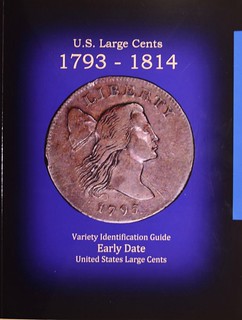 Some of you may recall that we offered a new Large cent variety attribution manual this past spring. Written by EAC member Robert Powers, and covering only 1793 to 1795 cents, it presented a very detailed attribution system that made a great deal of sense to me. Powers' system seemed familiar and comfortable since it used a general premise that I was taught 30+ years ago by my primary mentor in the Bust half dollar world, Dr. Michael Summers. Mike explained that I should learn to recognize Bust half dollar die marriages - especially the rare ones - as if they were familiar faces. The 20-odd copies we had of Powers' self-published book sold out in less than a week.
Some of you may recall that we offered a new Large cent variety attribution manual this past spring. Written by EAC member Robert Powers, and covering only 1793 to 1795 cents, it presented a very detailed attribution system that made a great deal of sense to me. Powers' system seemed familiar and comfortable since it used a general premise that I was taught 30+ years ago by my primary mentor in the Bust half dollar world, Dr. Michael Summers. Mike explained that I should learn to recognize Bust half dollar die marriages - especially the rare ones - as if they were familiar faces. The 20-odd copies we had of Powers' self-published book sold out in less than a week.
Now, Robert Powers is back with something way better. He's been using the pandemic to complete the work on his latest book, covering the entire Early Date cent series. We now have, "U.S. Large Cents 1793-1814, Variety Identification Guide" in stock and available. 274 pages that are packed with Powers' observations and ID keys, color photos throughout and printed in the USA. I am a big fan of this book, and highly recommend you get your copy soon. We have only 100 in stock.
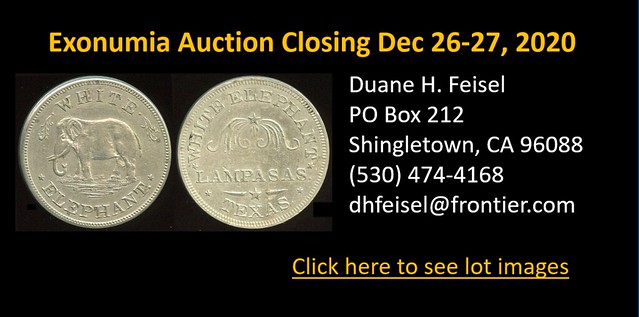
NEW BOOK: EXPLORING CURRENCY PLATE PROOFS
Chris Steenerson submitted this press release about his new resource for National Bank Note Research. Thanks. -Editor
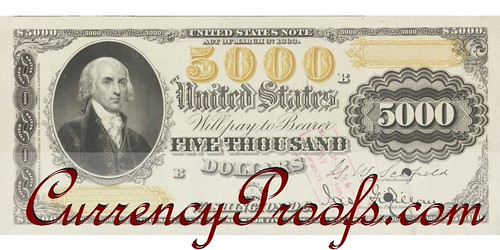
"Exploring The Certified Currency Plate Proofs" is a reference work indexing the National Bank Note plate proofs by state, bank charter, date period and denomination. The set of handbooks currently consists of 50,945 face and back proofs, divided into 333 volumes, in PDF format, with more coming soon to eventually total 400+ titles.
BANKNOTE BOOK WEIHAIWEI CHAPTER PUBLISHED
Owen Linzmayer publishes The Banknote Book, a useful, constantly updated electronic reference. The chapter on the banknotes of Weihaiwei is now available for $4.99. -Editor
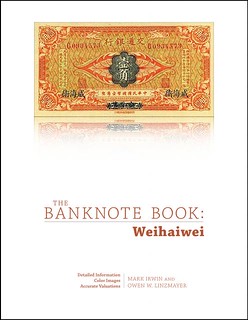 Mark Irwin has added another chapter to his cataloging opus with this week's publication of the following:
Weihaiwei (East and Southeast Asia)
Mark Irwin has added another chapter to his cataloging opus with this week's publication of the following:
Weihaiwei (East and Southeast Asia)
This 7-page catalog covers notes issued by the Bank of Communications from 1914 to 1927, the Bank of China in 1918, and the National Industrial Bank of China in 1924.
To read the complete article, see:
Weihaiwei chapter of The Banknote Book is now available
(https://banknotenews.com/?p=31635)

JEAN BELAUBRE (1931-2020)
Georges Depeyrot submitted this information on the passing of Jean Belaubre, former curator of the Musée de la Monnaie, Paris. Thank you. -Editor
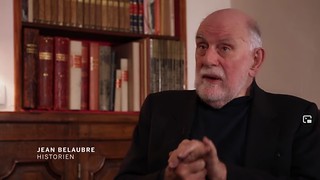 Jean Belaubre, former curator of the Musée de la Monnaie, Paris, died on December 10, 2020. Designer and creator of the permanent museum dedicated to the history of French money, at the end of the 1980s, he was no less illustrated in many related fields. He participated in the heyday of the Club Français de la Médaille journal (1970s and 1980s), signing many articles devoted to remarkable coins and the work of medal engravers, which fueled his reflection.
Jean Belaubre, former curator of the Musée de la Monnaie, Paris, died on December 10, 2020. Designer and creator of the permanent museum dedicated to the history of French money, at the end of the 1980s, he was no less illustrated in many related fields. He participated in the heyday of the Club Français de la Médaille journal (1970s and 1980s), signing many articles devoted to remarkable coins and the work of medal engravers, which fueled his reflection.
RICHARD L. HORST (1934-2020)
Herb Klug sent along word of the passing of Richard L. Horst. Thanks. Here's an excerpt from his online obituary. -Editor
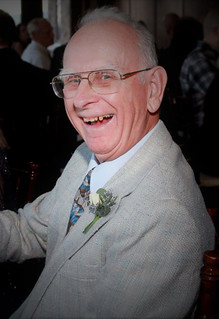 Richard L. Horst, 86, passed away November 10, 2020. He is survived by his wife, Joyce, four children, five grandchildren and a great grandchild. He was born in St. Paul, Minnesota in 1934. He was a natural tinkerer and was involved with ham radios with his school friends. He put himself through the University of Minnesota by working at the local appliance repair shop and graduated in 1956 with a Bachelor of Science degree in Electrical Engineering.
Richard L. Horst, 86, passed away November 10, 2020. He is survived by his wife, Joyce, four children, five grandchildren and a great grandchild. He was born in St. Paul, Minnesota in 1934. He was a natural tinkerer and was involved with ham radios with his school friends. He put himself through the University of Minnesota by working at the local appliance repair shop and graduated in 1956 with a Bachelor of Science degree in Electrical Engineering.
Richard was employed by Univac in St. Paul after graduation. He also served in the U.S. Army Reserve for seven years. He married Joyce Malmgren in 1957 and they celebrated their 63rd anniversary this year. In 1979, he moved to Colorado Springs, Colorado to work at Hewlett Packard (HP). After HP split into HP and Agilent Technologies, he moved to Agilent Technologies and retired from there in 1999.
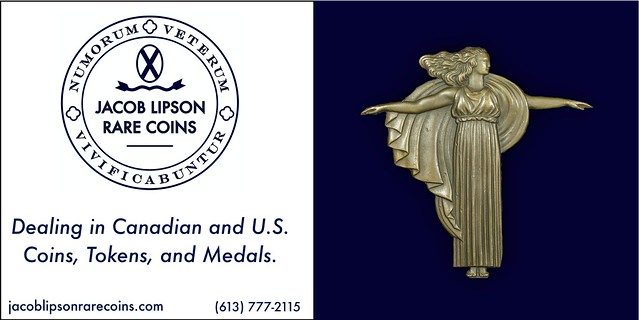
NNP ADDS KOENINGS' REEDED EDGE HALF NEWSLETTER
The latest addition to the Newman Numismatic Portal is the Reeded Edge Half Newsletter Project Coordinator Len Augsburger provided the following report. -Editor
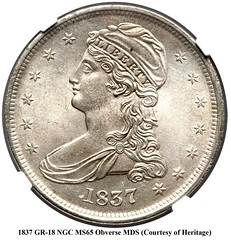
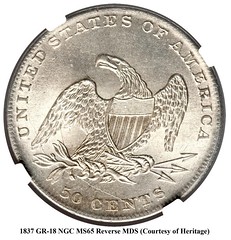
VIDEO: NATIONAL SILVER DOLLAR ROUNDTABLE
These are selections from the David Lisot Video Library that feature news and personalities from the world of coin collecting. David has been attending coin conventions since 1972 and began videotaping in 1985. The Newman Numismatic Portal now lists all David's videos on their website at:
https://nnp.wustl.edu/library/multimediadetail/522852
Here's one on the founding of the National Silver Dollar Roundtable. -Editor
Founding of National Silver Dollar Roundtable (NSDR).
VIDEO: 10:20. (June 1, 2016)
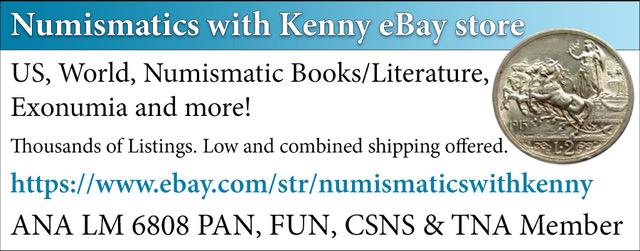
VIDEOS: 2020 COLONIAL COIN EDUCATIONAL PROGRAMS
Videos of all six of the 2020 Colonial Coin Collectors Club Educational Programs (recorded November 12-14, 2020) are now available on the C4 Website. The videos were produced by Lianna Spurrier. -Editor

The Long and Twisted Road to Virginia Halfpence
Dr. Roger Moore
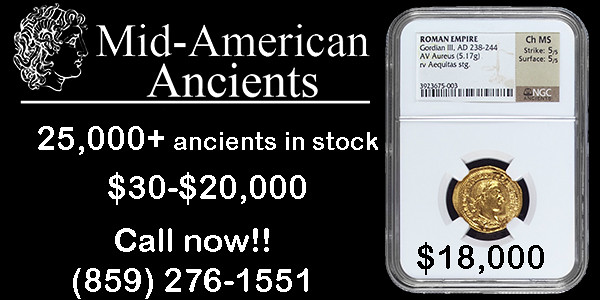
AUDIO: COIN WORLD PODCAST WITH ROGER BURDETTE
Author Roger Burdette was interviewed recently on the Coin World podcast - check it out! -Editor
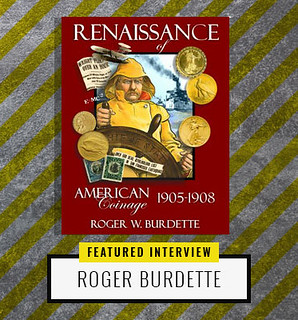
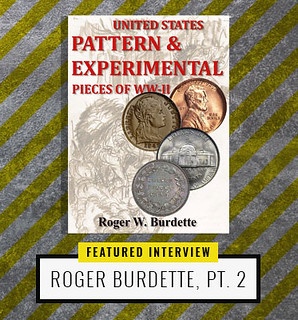
Part 1
Jeff and Chris discuss the record-breaking sale of the recently-discovered, third known Eid Mar aureus and interview Roger Burdette about his three-volume series The Renaissance of American Coinage.
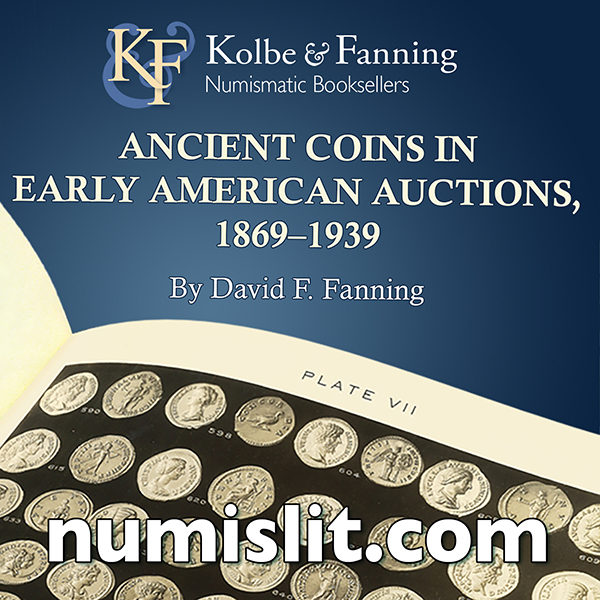
MORE COINS IN LUCITE: CHURCHILL, GOULD, KENNEDY
Bruce Perdue writes:
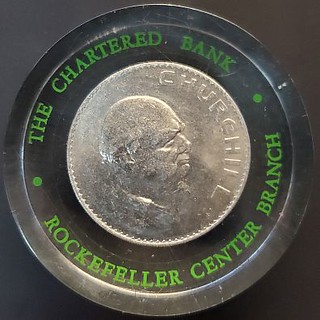 "I was of course interested to see more Lucite encased coins this week. I passed on sending you an image of the toilet seat and many other Lucite encased coins that I own. I am enclosing one more since it ties into two articles from the December 6, 2020 (v23n49) issue. I have two Churchill crowns encased in Lucite from, "The Chartered Bank - Rockefeller Center Branch". It's 2 1/4 inches in diameter and 1 inch high. The other is 3 inches by 3/4 inch, otherwise identical.
"I was of course interested to see more Lucite encased coins this week. I passed on sending you an image of the toilet seat and many other Lucite encased coins that I own. I am enclosing one more since it ties into two articles from the December 6, 2020 (v23n49) issue. I have two Churchill crowns encased in Lucite from, "The Chartered Bank - Rockefeller Center Branch". It's 2 1/4 inches in diameter and 1 inch high. The other is 3 inches by 3/4 inch, otherwise identical.
"To further tie it into the Bibliomania aspect of this newsletter, while visiting Blenheim Palace in 2008 it was recommended to me that if I really wanted to understand Winston Churchill I should read, "Fortune's Daughters" the story of Jennie Churchill, Winston's mother, and her 2 sisters. They were New York City socialites who came to London and married aristocracy. It is an interesting look into his mother and how the aristocracy behaved and raised their children and how it shaped Winston.
"My local library thru interlibrary loan obtained a copy from the University of Illinois Champaign campus. I was the first to read it. "
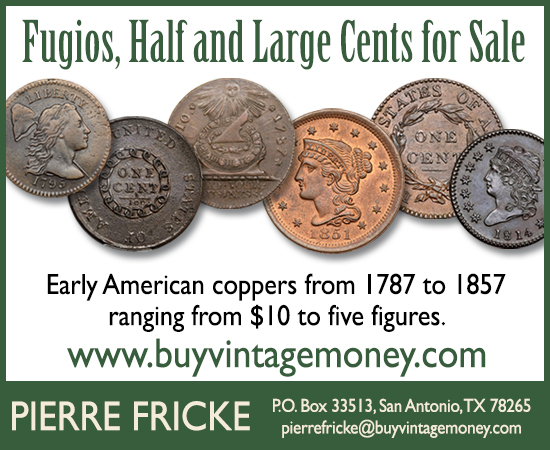
NOTES FROM E-SYLUM READERS: DECEMBER 13, 2020
Castorland Jeton Obsessive Date
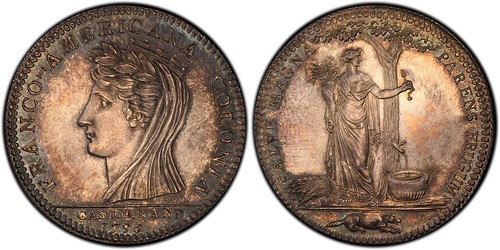
Chester Sullivan writes:
"Not every Monday morning does The E-Sylum toss up a gem for me, but when it does it's usually a stunner. A few weeks back Dick Johnson's entry of obsessive date was a big one. Original-dies Castorland jetons were minted from circa 1796 up to the "pointing hand" edge mark period of June 13, 1845-Oct. 31, 1860. And they all carry the date 1796. I cherish a copy of Dick's Encyclopedia and have run through it numerous times, but I've consistently overlooked that particular entry. Thanks for calling it to mind."
Glad to help! -Editor
To read the earlier E-Sylum articles, see:
HELP SOUGHT FOR CENSUS OF CASTORLAND JETONS
(https://www.coinbooks.org/esylum_v18n16a15.html)
VOCABULARY TERM: OBSESSIVE DATE
(https://www.coinbooks.org/v23/esylum_v23n48a16.html)
NOTES FROM E-SYLUM READERS: DECEMBER 6, 2020 : Frozen Dates
(https://www.coinbooks.org/v23/esylum_v23n49a13.html)
Other topics this week include numismatic place names, posters and more. -Editor
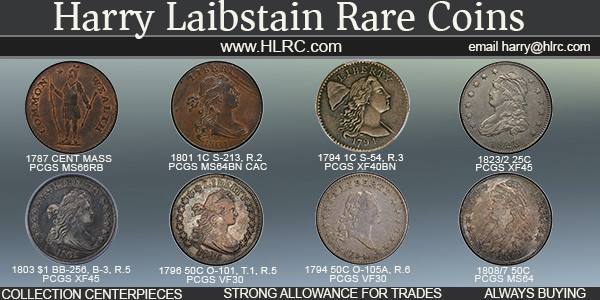
QUERY: SECOND PHILADELPHIA MINT IMAGE ORIGIN
Pete Smith submitted this interesting question for our readers. -Editor
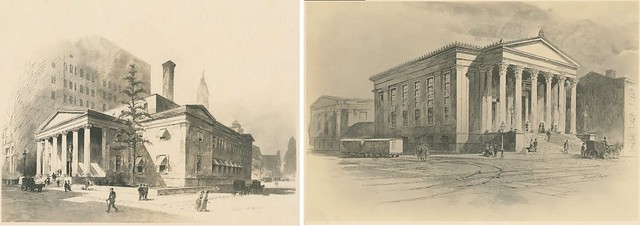
I was amused by two images that I recently found in the archives of the Library Company of Philadelphia. Readers of The E-Sylum should recognize the building on the left as the Second Philadelphia Mint. It was located at the northwest corner of Chestnut and Juniper with South Penn Square on the north. It was about a half-block east of Broad Street.
THE BOOK BAZARRE
QUERY: THE FIRST COINS OF ISRAEL
Stephen Olson submitted this request for additional information about the first coins minted by the state of Israel. -Editor
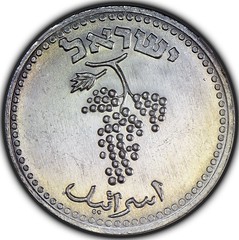
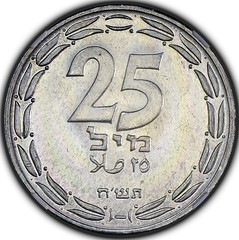
These coins were the first ones minted by the State of Israel in 1948. They were mostly (perhaps exclusively) minted in the town of Holon, shortly after Israel's Independence Day on May 14, 1948. There are a number of different versions to this story, but I have gleaned some basics in my research. When the British withdrew their mandate, they took with them much of the circulating coinage, which were primarily Palestine prutas & mils. This left the fledgling State of Israel in a precarious situation financially, as well as militarily.
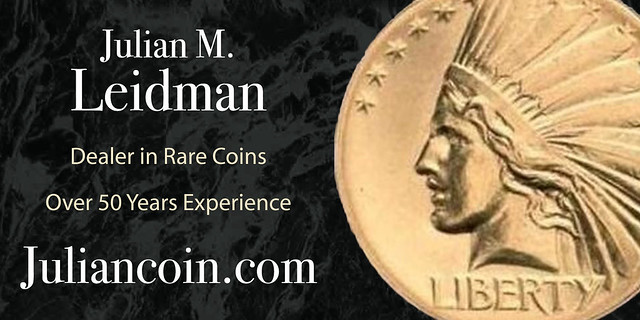
VOCABULARY TERM: OPENWORK
Dick Johnson submitted this entry from his Encyclopedia of Coin and Medal Terminology. Thanks. -Editor
Openwork. A pierced coin or medal, with an opening made as part of its artistic design, or cut out at a later time. Coins are found with square or round holes in the center, with little other openwork design. Openwork medals are somewhat more artistic in that the open area is usually not in the center but appears elsewhere in the design, as part of the artistic expression. All openwork is cut entirely through the item forming the most severe treatment and allowing showthrough with a view of any thing placed behind it.
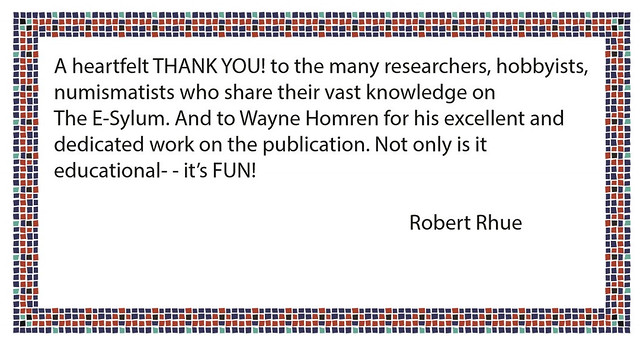
WILLIAM SPOHN BAKER (1824-1897)
John Lupia submitted the following information from the online draft of his book of numismatic biographies for this week's installment of his series. Thanks! As always, this is an excerpt with the full article and bibliography available online. This week's subject is Philadelphia collector William Spohn Baker. -Editor
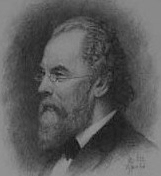 Baker, William Spohn (1824-1897), Philadelphia, Pennsylvania. Author of Medallic Portraits of Washington.
Baker, William Spohn (1824-1897), Philadelphia, Pennsylvania. Author of Medallic Portraits of Washington.
Baker was a Conveyancer, Collector of Art, Prints, Medals and Rare Books, Archaeologist, Author, Educator, Antiquarian, and Banker.
He was born in Philadelphia, Pennsylvania, 17 April, 1824, son of George Nice Baker (1788-1859), and Ann Keyser (1792-1867), "was a great-great-granddaughter of Dirk Keyser, who settled in Germantown in 1688. His great-grandfather, Michael Baker, who became a resident of this city in 1740, and his grand-father, Michael Baker, Jr., served during our war for independence, the former as a private and the latter as a lieutenant in the artillery battalion commanded by Colonel Jehu Eyre. His great-grandfather, Captain George Nice, also commanded a company of the Second Battalion Philadelphia Artillery Militia."
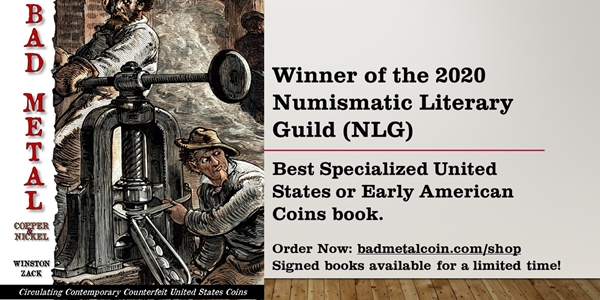
2021 COIN OF THE YEAR NOMINATIONS
In a December 11, 2020 Numismatic News article, Maggie Judkins reported on the nominees for the 2021 Coin of the Year awards. -Editor
The nomination process for the 2021 Coin of the Year awards looked a bit different this year, but the program is well under way despite travel and gathering restrictions due to COVID-19. One-hundred nominees – 10 coins in each of 10 award categories – emerged after the Nominating Committee met virtually Nov. 3, 2020, to consider 400 coin nominees curated by more than 45 issuing entities from around the world.
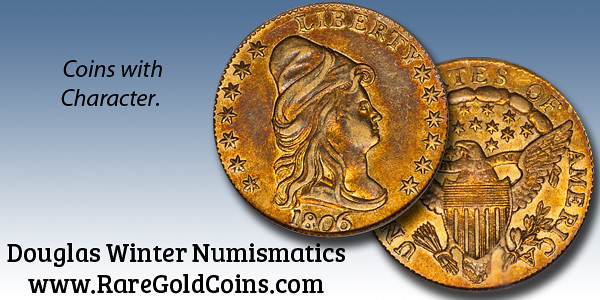
THE NEW YORK SALE AUCTION LIII
Steve Hill of Sovereign Rarities passed along this summary of the many highlights of their offerings in next month's New York Sale Auction LIII. Many great coins here. Thanks. -Editor
The coins in this catalogue are offered for sale on Thursday 14th January 2021 and will be sold from the Los Angeles offices of New York Sale partner Ira and Larry Goldberg (due to the cancellation of the 2021 New York International Coin Convention).
The sale's two main core groups are a collection of European silver Talers, and a collection of British coins which incorporates the Anglo-Saxon and hammered portion of the William Oldknow Collection; whose main Ancient coin collection is featured in the Ancient coin sale being held by the group two days earlier.
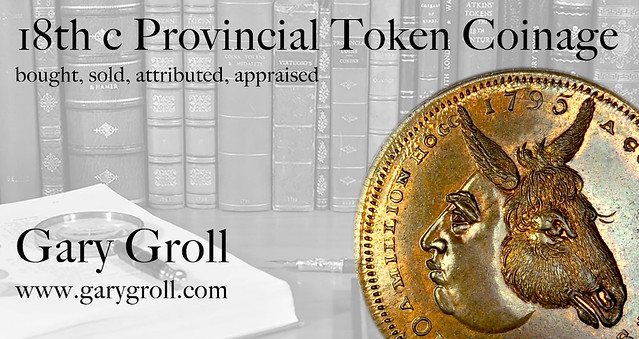
CLASSICAL NUMISMATIC GROUP TRITON XXIV SALE
Here is the press release for Classical Numismatic Group's January 2021 sale, Triton XXIV. Some amazing coins. -Editor
A Live Online Sale
Closing Tuesday & Wednesday, 19-20 January 2021
Classical Numismatic Group, LLC is proud to present Triton XXIV, a Live Online Sale closing Tuesday & Wednesday, 19-20 January 2021, from our Lancaster, Pennsylvania office. This sale offers 1461 lots with a presale estimate of $6.5 million.

CANAAN BRONZE AGE SILVER DEBASEMENT
Dick Hanscom passed along this Live Science article about the chemical composition of hoards of Bronze Age silver found a around Israel. Thanks. -Editor
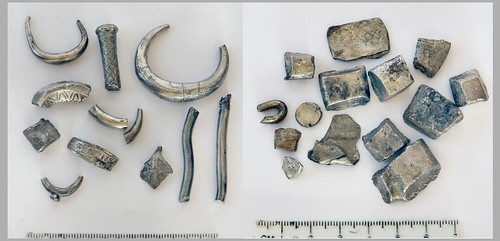
A shortage of silver caused by the collapse of leading Bronze Age civilizations around the eastern Mediterranean about 1200 B.C. resulted in the original "dirty money" — several hundreds of years before coins had been invented.
The ancient counterfeiting was revealed by archaeologist Tzilla Eshel, then a doctoral student at the University of Haifa, who studied the chemical composition of 35 buried hoards of Bronze Age silver found at archaeological sites around Israel.
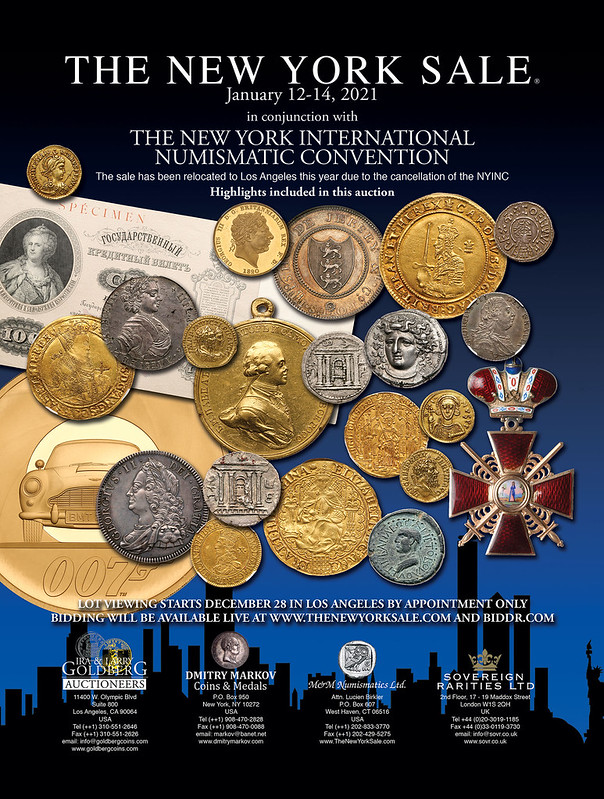
THE COINAGE OF RHEGIUM
On November 30, 2020 Mike Markowitz published a new CoinWeek Ancient Coin Series article on the coinage of Rhegium. Here's an excerpt - be sure to see the complete article online. -Editor
FOR CENTURIES, THE narrow Strait of Messina that separates Sicily from the toe of Italy has been a crossroads of history.
The town of Rhegium (or Rhegion, today Reggio di Calabria) located on the Italian side of the Strait, was one of the first Greek cities in Italy, founded by colonists from Chalcis in the eighth century BCE. Cities of this region competed vigorously during the fifth and fourth centuries BCE to create coins of enduring classical beauty, and the silver tetradrachms of Rhegium stand as some of the finest – and most highly valued – products of the ancient engraver's art.
READING ROMAN COINS
In October Mike Markowitz published a very useful CoinWeek article on reading inscriptions and dates on ancient Greek coins. This week he published a companion article on ancient Roman coins. Here's an excerpt - see the complete article online. -Editor
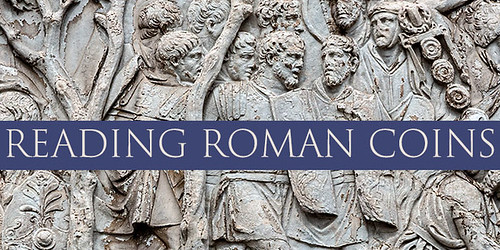
ANCIENT ROMANS WERE practical-minded people; they didn't like wasted effort. Every letter on an ancient Roman coin die was painstakingly engraved by hand, so inscriptions on Roman coins are often heavily abbreviated. Generations of classical scholars have toiled to unravel the meaning of these cryptic abbreviations, so we can usually understand what the coins are trying to tell us.
Still, modern collectors are accustomed to a lot of specific information on a coin: the name of the country or issuing authority, the coin's denomination, the date of issue, the mintmark, and perhaps a motto (such as E PLURIBUS UNUM – "out of many, one" – on American coins).
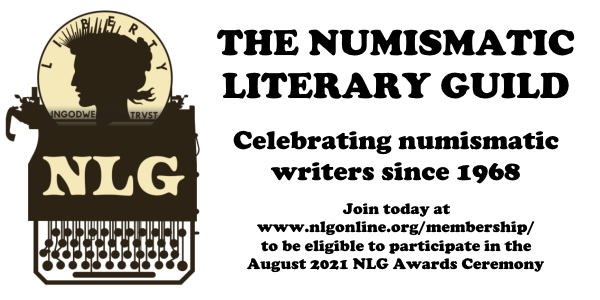
BACKYARD TUDOR GOLD COIN HOARD FIND
Mark B. Holton passed along an article from The Guardian about a family's interesting backyard discovery of a valuable hoard of medieval gold and silver coins. Thanks! Mark writes: "Imagine, finding all those gold coins in the garden. Darn, all I find when I dig in my garden are weeds!" -Editor
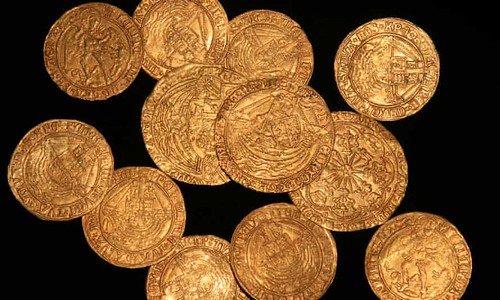
An important hoard of Tudor coins – some of which shine light on the marriage history of Henry VIII – has been found by a somewhat startled family weeding their garden.
The British Museum revealed details on Wednesday of discoveries registered to its Portable Antiquities Scheme (PAS), the majority of which are made by the nation's army of metal-detecting enthusiasts.
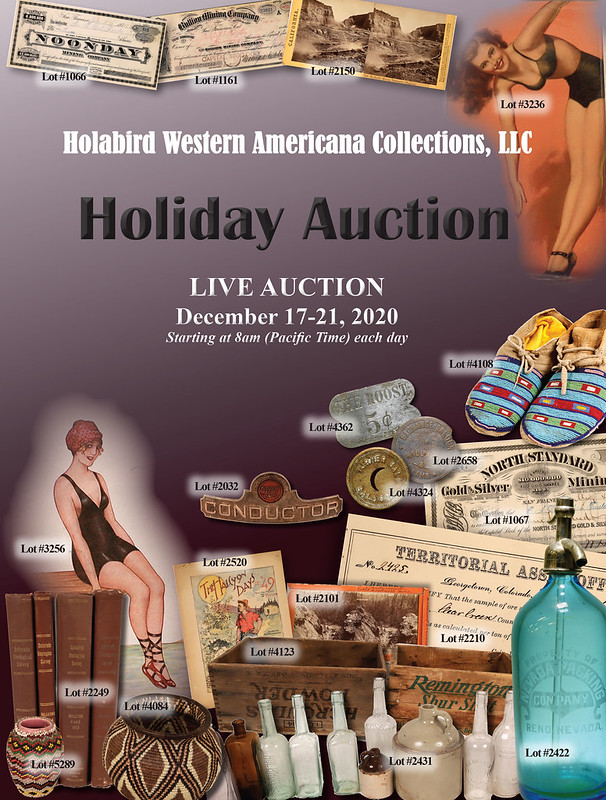
THE COINING HOUSE OF SEGOVIA
The restored Segovia Mint in Segovia, Spain is discussed in this brief recent Atlas Obscura article. -Editor
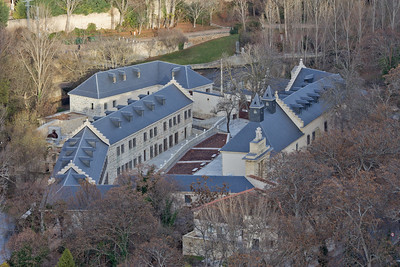
The Segovia Mint
UNTIL THE MID-16TH-CENTURY, EUROPE'S MINTING techniques had not progressed from ancient Greek coinage, which was struck by hand using dies and a hammer. Eventually, this method became ineffective as a large amount of bullion was imported from across the world and the mints had trouble keeping up.
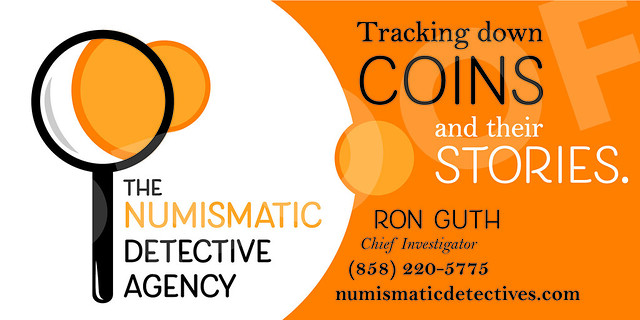
LOUIS ELIASBERG'S BARBER HALF DOLLARS, PART II
Ron Guth's latest blog post is Part II of his investigation into the current whereabouts of the coins once owned by collector Louis Eliasberg. -Editor
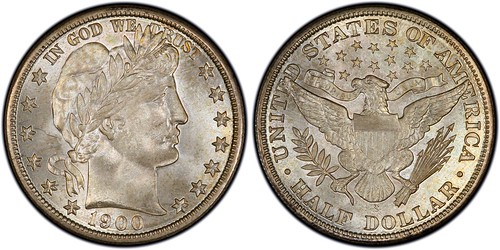
1900-1909
This is the second installment of a three-part series where I identify many of the Barber Half Dollars that were sold in 1997 as part of the Louis Eliasberg, Sr. collection. This installment will look at the dates from 1900 to 1909 and provide updated provenances for as many of the coins as possible. Several of these coins will be coming up for sale as part of the Larry Miller collection by Stack's/Bowers on December 17, 2020. Mr. Miller was in attendance at the April 1997 sale of the Eliasberg Barber Half Dollars conducted by Bowers & Merena, where he purchased quite a few of the coins and placed them in his collection. This cache of Barber Half Dollars from the Eliasberg/Miller collection allowed me to fill in enough holes so that the listing of Eliasberg provenances for this series is almost complete.
THE BOOK BAZARRE
ADVENT COINS: ON THE ROAD TO BETHLEHEM
David Pickup submitted this third article in his series of four for the season of advent, featuring coins or tokens with a link in some ways to the Christmas story. Thanks! This one is about Bethlehem. -Editor
On the Road to Bethlehem
This week we are on the way to Bethlehem. Bethlehem is where the young couple travelled to because the Emperor had made a ruling that everyone had to go to their home town for a census. It was probably a government ruse to raise more taxes. We have got used to obeying government decrees this year and like the good citizen he was, Joseph, went there, knowing that it would be busy at Christmas time.
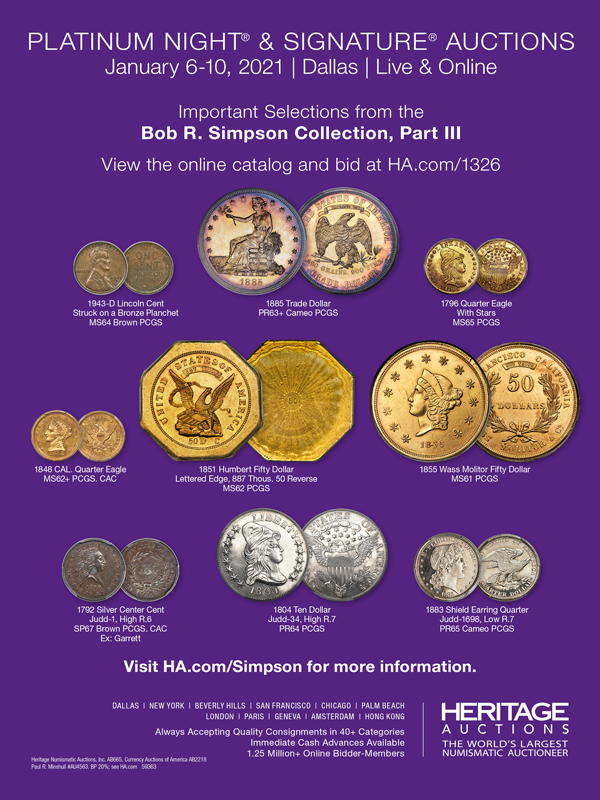
PAPER MONEY DEPICTING JESUS
Jeff Wing submitted a Christmas article as well, on paper money. Thank you! -Editor
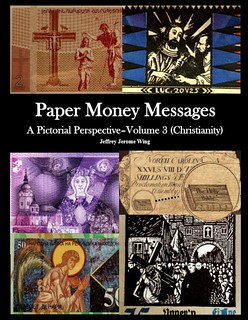 The decorations, music, gatherings, and television let us know that it is the Christmas season.
However, do these items emphasis the real "Reason for the Season?" Likewise, many consider
the fact that US money states "In God we Trust," to be inspirational since it shows that the US is
based on faith. Do other countries depict Christian faith? To answer this question, I performed
much research and found the answer to be a resounding "Yes." This led me to write the book
Paper Money Messages – Vol 3 (Christianity).
The decorations, music, gatherings, and television let us know that it is the Christmas season.
However, do these items emphasis the real "Reason for the Season?" Likewise, many consider
the fact that US money states "In God we Trust," to be inspirational since it shows that the US is
based on faith. Do other countries depict Christian faith? To answer this question, I performed
much research and found the answer to be a resounding "Yes." This led me to write the book
Paper Money Messages – Vol 3 (Christianity).
BANK OF ENGLAND FATHER CHRISTMAS £5 POSTCARD
In a December 9, 2020 email, the Bank of England Museum published an image of this great Christmas postcard from their collection. -Editor
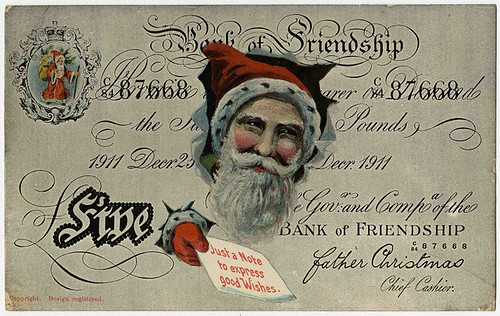
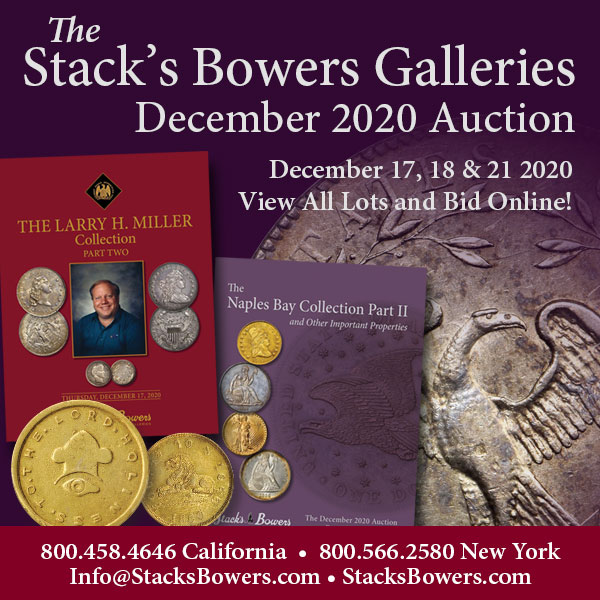
MOVIE REVIEW: THE MILLION POUND NOTE
With lots of us spending much time at home these days, it's a nice opportunity to catch up on some great old films we might have missed. One such old film is the 1954 production based on the Mark Twain story "The Million Pound Bank Note". Here's a retro review from the Sunday Observer. -Editor
What 'currency' does a 'banknote' have? The question itself might sound utterly senseless and absurd. However, it is this supposition that becomes the premise for a wager that one may say is something of 'financial philosophy' between the wealthy and eccentric Montpelier brothers in London that sets off the events that form the comedic and somewhat exciting 'The Million Pound Note'. A work of British cinema from 1954 with Hollywood screen legend Gregory Peck in the lead role as the penniless American seaman Henry Adams, this film directed by Ronald Neame is based on the short story The Million Pound Bank Note by Mark Twain.
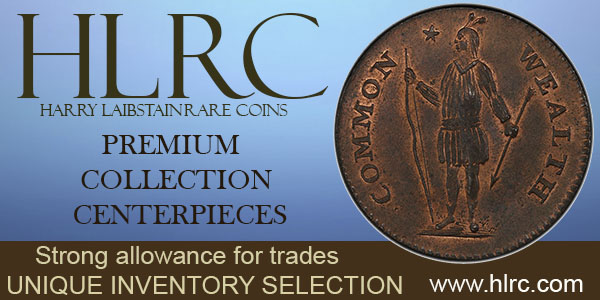
U.S. POST-WWII GERMANY BARTER UNIT CERTIFICATES
An item in the German Geldscheine Online newsletter this week caught my eye. Illustrated with a lot image from Heritage, it describes the post-WWII "Barter Unit" certificates of the US occupation forces in Germany. Here is the Google-translated article text. I wasn't aware of these - very interesting emergency money issue. -Editor
Lexicon: Barter Units
At the instigation of the US occupation zone in Germany, so-called barter stores were opened in 1946 based on the pattern of the previously existing exchange ring stores, initially only in Berlin, then also in Frankfurt am Main. Items that were made available by American soldiers and essential for the German population were exchanged for expendable items.
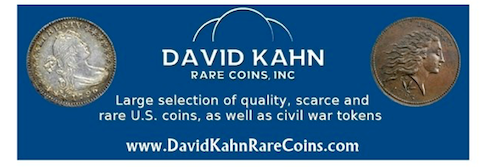
BEP CHOOSES ARCHITECTS FOR NEW FACILITY
The Architect's Newspaper published an article December 8. 2020 about the awarding of a contract to design the BEP's new DC-area production facility. -Editor
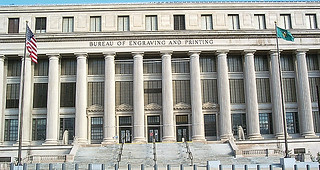 Skidmore, Owings & Merrill (SOM) has announced that it has been chosen to design, master plan, and engineer a new currency production facility operated by the United States Department of Treasury's Bureau of Engraving and Printing (BEP). With the formal announcement, the firm will now join a joint venture, the Capital Currency Team (CCT), that also includes industrial engineer Ghafari Associates and MEP engineer Huitt-Zollars and is administered by the U.S. Army Corps of Engineers, Baltimore District.
Skidmore, Owings & Merrill (SOM) has announced that it has been chosen to design, master plan, and engineer a new currency production facility operated by the United States Department of Treasury's Bureau of Engraving and Printing (BEP). With the formal announcement, the firm will now join a joint venture, the Capital Currency Team (CCT), that also includes industrial engineer Ghafari Associates and MEP engineer Huitt-Zollars and is administered by the U.S. Army Corps of Engineers, Baltimore District.
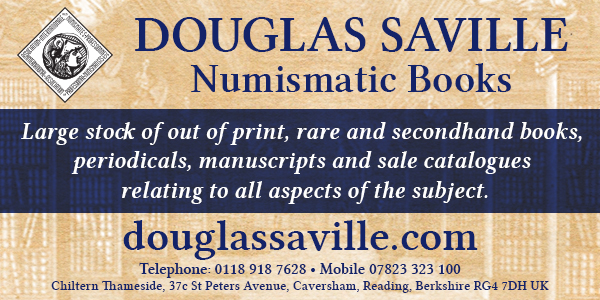
FORREST FENN FORTUNE FINDER FOUND
Perhaps there was a real Forrest Fenn treasure chest after all. A man has come forward identifying himself as the finder. -Editor
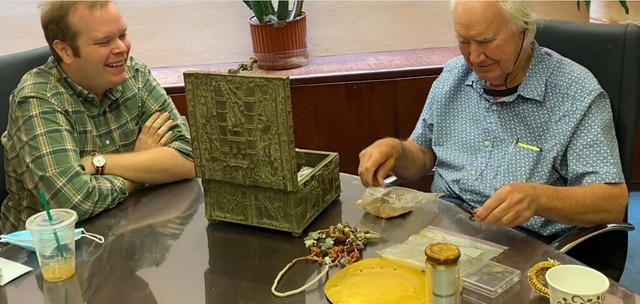
A decade ago, Fenn hid his treasure chest, containing gold and other valuables estimated to be worth at least a million dollars, somewhere in the Rocky Mountains. Not long after, he published a memoir called The Thrill of the Chase, which included a mysterious 24-line poem that, if solved, would lead searchers to the treasure. Fenn had suggested that the loot was secreted away at the place where he had envisioned lying down to die, back when he'd believed a 1988 cancer diagnosis was terminal. Since the hunt began in 2010, many thousands of searchers had gone out in pursuit—at least five of them losing their lives in the process—and the chase became an international story.
So many people had invested and sacrificed so much in pursuit of Fenn's treasure that it was possible the finder would face threats, be they legal or physical, from people who resented them or wished them ill.
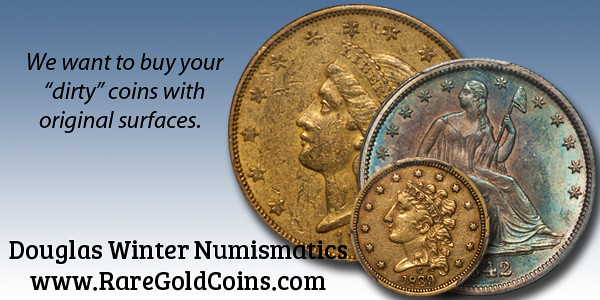
UZBEKISTAN'S MINI GOLD BARS
Kavan Ratnatunga passed along articles and a video about a new gold product issued by the Central Bank of Uzbekistan. -Editor
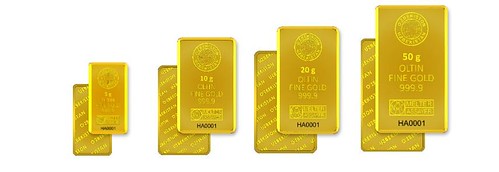
Since November 2020, the central bank of Uzbekistan (CBU) issues sealed gold bars with a QR-code for real time verification. With these new bars CBU aims to stimulate gold to be used as a store of value, as well as promote the circulation of gold.
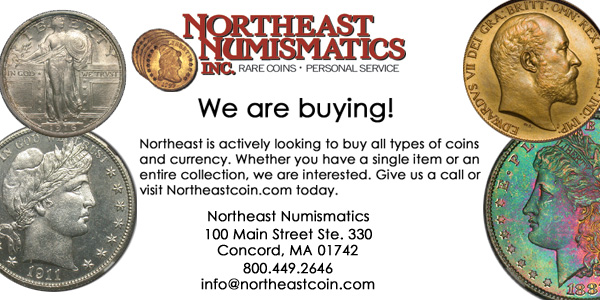
CASH, COINS AND COVID SEMINAR
The Mint Directors Conference (MDC) is an industry organization of government mints worldwide. Well aware of the challenges facing cash in general and the COVID pandemic shortages in particular, the group is offering a Zoom seminar titled Cash, Coins and COVID: The Perfect Storm. Registration seems to be open to all, so perhaps some curious readers will want to listen in. It starts at 11AM London time Tuesday December 15, 2020. Here's the announcement. -Editor

MDC Webinar: CASH, COINS AND COVID – THE PERFECT STORM
Prior to the COVID-19 pandemic, coin circulation faced challenges. Although coins are a payment instrument in their own right, they are, of course, only one part of the cash cycle. Any consideration of the impact of COVID on coins starts with the wider payment scene to provide the full picture.
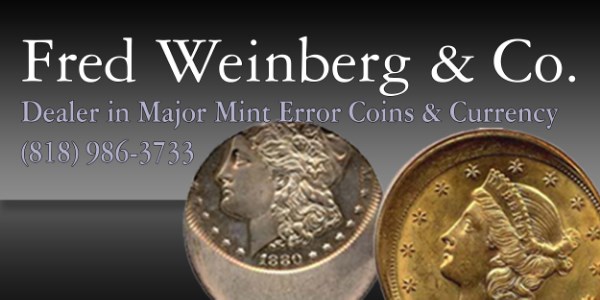
LOOSE CHANGE: DECEMBER 13, 2020
Here are some additional items in the media this week that may be of interest. -Editor
Book Review: Ancient Coins in Early American Auctions
In the December 10, 2020 CoinsWeekly newsletter, Ursula Kampmann reviews Dave Fanning's new book Ancient Coins in Early American Auctions, 1869-1939. -Editor
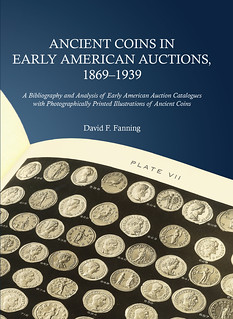 To read the complete article, see:
To read the complete article, see:
A Contribution to Provenance Research
(https://coinsweekly.com/a-contribution-to-provenance-research/)
To read the earlier E-Sylum articles, see:
NEW BOOK: ANCIENT COINS IN EARLY AMERICAN AUCTIONS
(https://www.coinbooks.org/v23/
esylum_v23n38a02.html)
REVIEW: ANCIENT COINS IN EARLY AMERICAN AUCTIONS
(https://www.coinbooks.org/v23/
esylum_v23n42a06.html)
Other topics this week include a job opening at the ANS, and the New Zealand fake money drop riot. -Editor
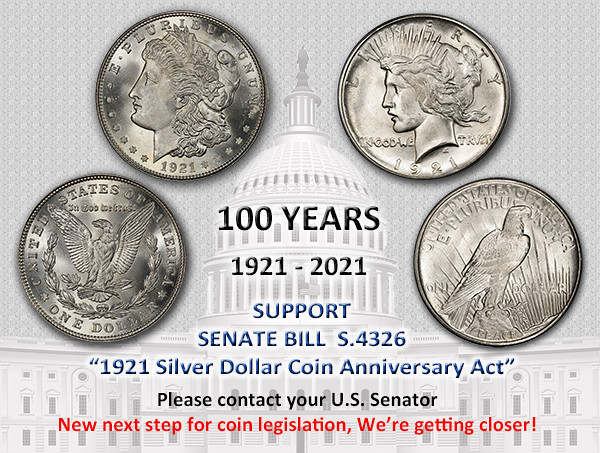
BIG COIN: THE GIANT TOONIE
In the really-big-coin department, this week I came across two Atlas Obscura articles about larger-than-life coin sculptures. Great companions to Sudbury's Big Nickel (see the earlier E-Sylum article. Here's the Giant Toonie. -Editor
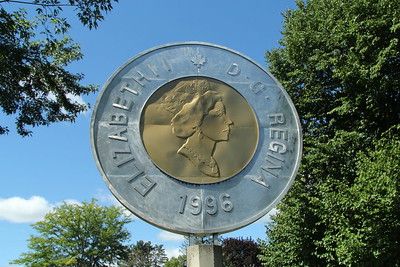
WHEN DRIVING NEAR THE CANADIAN town of Campbellford, visitors may miss this 27-foot tall statue of the iconic silver and gold two dollar coin. The trees that surround the monument tend to obscure it from public view.
BIG COIN: THE BIATEC MONUMENT
The Biatec Monument pictures a rare Celtic coin design popular in Bratislava. Impressive! -Editor
Biatec Monument
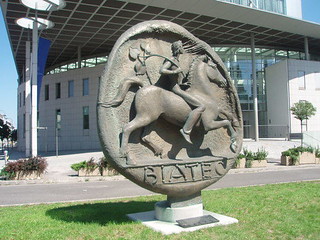 IT'S UNCLEAR WHO BIATEC WAS. The name appears on the coins that circulated among the Celtic tribe of the Boii, minted in what is present-day Bratislava around 60-40 B.C. These rare ancient coins are also referred to as Biatec (or Biatex) by modern scholars. Although this has not been confirmed, it was likely the name of the leader of the tribe.
IT'S UNCLEAR WHO BIATEC WAS. The name appears on the coins that circulated among the Celtic tribe of the Boii, minted in what is present-day Bratislava around 60-40 B.C. These rare ancient coins are also referred to as Biatec (or Biatex) by modern scholars. Although this has not been confirmed, it was likely the name of the leader of the tribe.
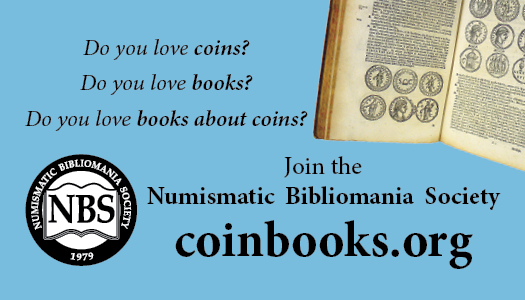
FEATURED WEB SITE: WAR WORK TOKENS
This week's Featured Web Site is Mark Smith's War Work Tokens: The Tokens, Checks & Passes of the British Munitions, Ordnance & Military Supply Industries.
This website aims to act as a hub for disseminating information and research related to the subject of tokens, checks and passes (i.e. paranumismatics) associated with British ordnance and munitions manufacture as well as military supply industry activities (i.e. War Work) in the British Isles. The site's principal period of focus is the Great War (1914 to 1918) although related tokens prior to this period as well as from the Second World War (1939 to 1945) and inter-war years are also included.
A longer term aim of this site will be to list, and wherever possible, illustrate all known types of paranumistmatics related to the above stated subject matter. The bulk of the tokens discussed were used by civilian workers employed in the manufacture of armaments (including airplanes and ships), weapons, explosives, munitions, military equipment and uniforms etc. at either privately owned or, more often, British Government operated specialist factories. These were located throughout the length and breadth of the United Kingdom.
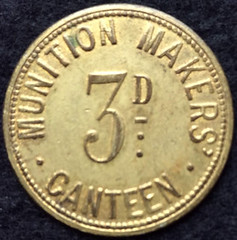
https://war-work.com/

